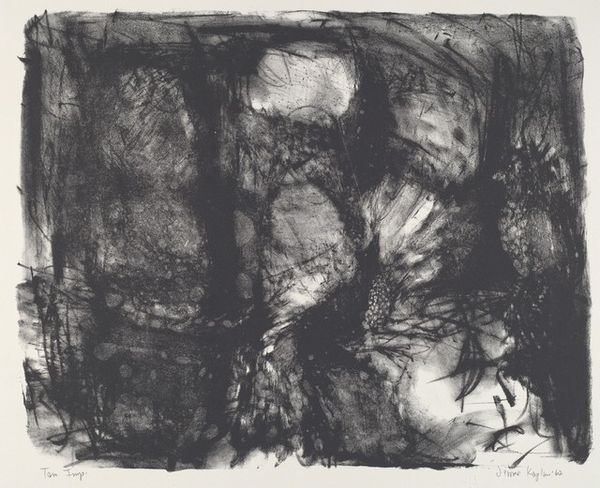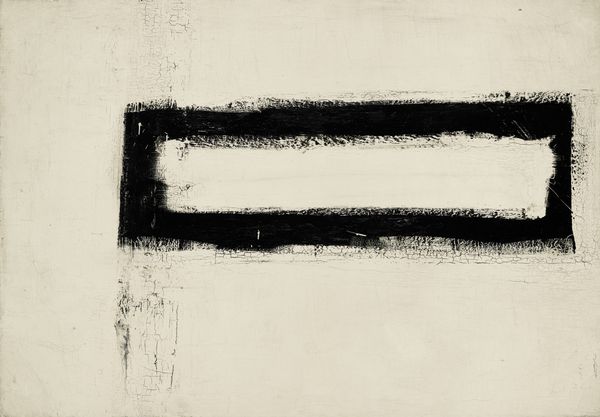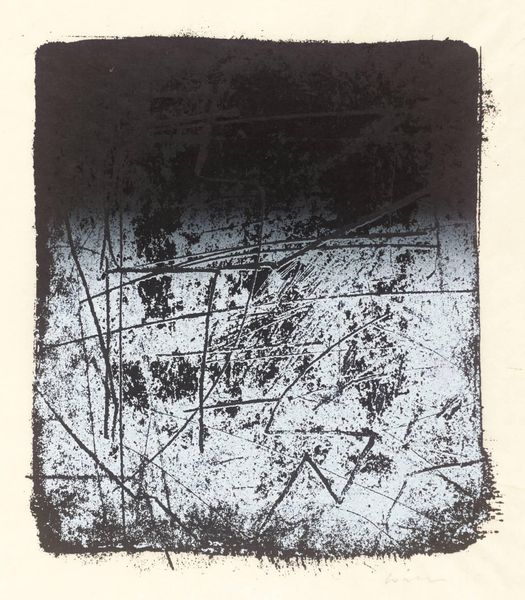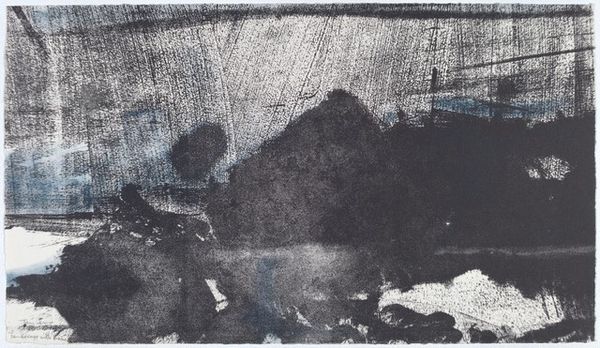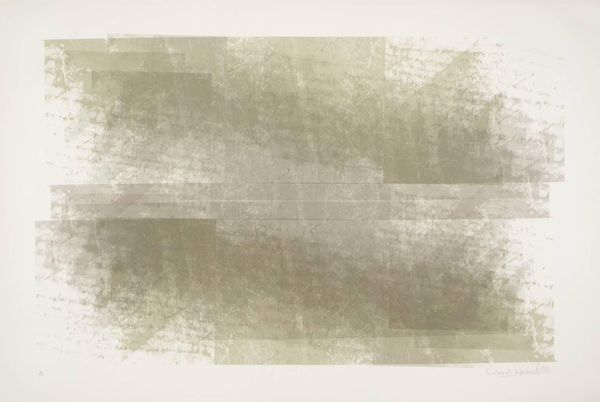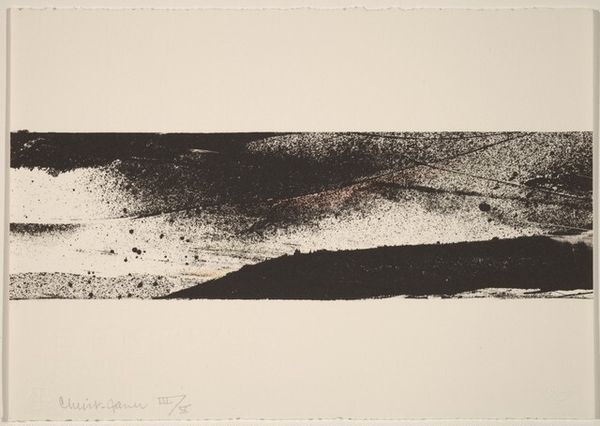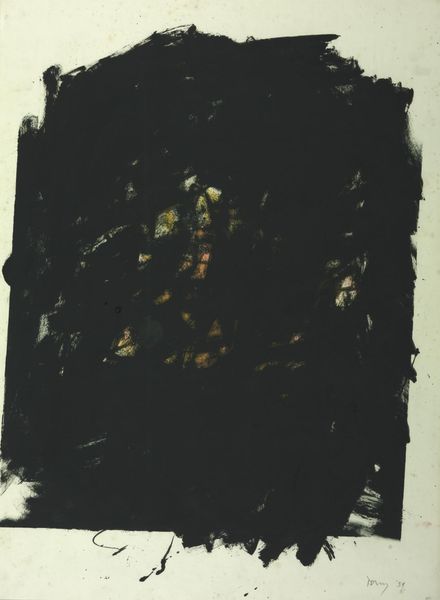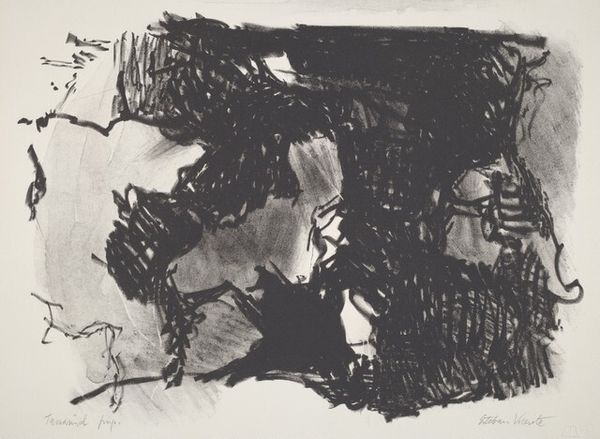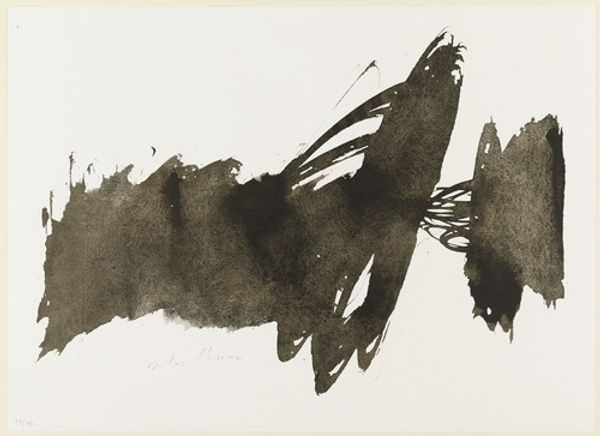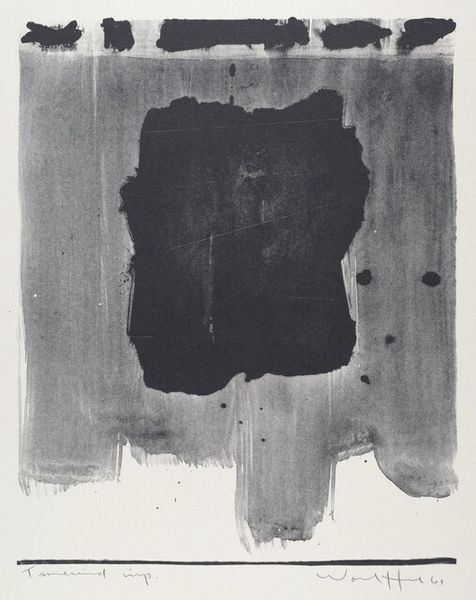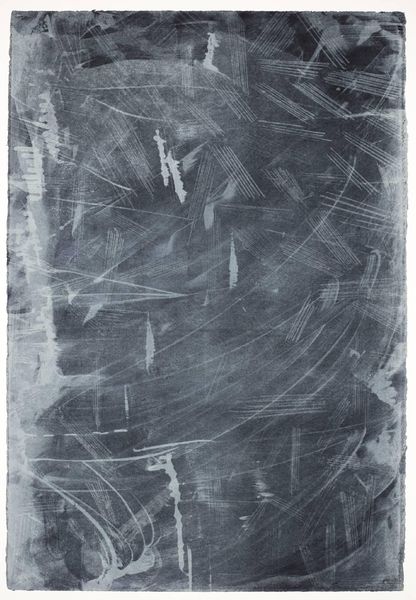
drawing, mixed-media, print, etching, paper, graphite
#
abstract-expressionism
#
drawing
#
mixed-media
# print
#
etching
#
paper
#
abstraction
#
line
#
graphite
#
monochrome
Copyright: National Gallery of Art: CC0 1.0
Curator: Before us, we have Richard Ruben's "III," created in 1961 using mixed media including etching, graphite, and print on paper. Editor: Immediately striking—a study in contrasts. You have this dominating solid black rectangle alongside areas of frenetic mark-making and washes of gray. There’s a sense of confinement fighting against freedom, all within this monochrome world. Curator: The tension is palpable, isn't it? Abstraction often invites projection. One might even interpret the forms as fractured representations of something primordial struggling to coalesce. There is this distinct symbol of wholeness struggling with aggressive mark making to make sense of it. Editor: It makes you wonder about the actual process. This combination of etching, graphite, and printing, what did that entail? Was Ruben deliberately layering these techniques, working additively, or was there a destructive element? The drips suggest a loss of control in their creation. Curator: Well, consider Abstract Expressionism and the automatist techniques many artists explored at this time. There's the letting go, allowing the subconscious to guide the hand. That big, bold, black form looming... perhaps it symbolizes repression, the shadow self Jung wrote about. It definitely dominates the subconscious process occurring. Editor: Perhaps. I see the physical act, the repetitive gestures, the pressure of the graphite, the biting of the acid in the etching process. To me, this echoes a more industrial experience. It speaks to labor and materiality—a dialogue between control and the resistance of the materials themselves. Curator: And yet, don't you find a certain serenity amidst the chaos? The delicate lines, almost like spiderwebs, juxtaposed with those heavy blocks… it whispers of fragility enduring against something far more overbearing. Editor: That fragility, those delicate lines...they are so exposed, so raw. It is quite revealing, even with such reduced material components, of process and intent. What tools are being used to drag or expose areas versus apply weight? So considered, I find more intention in it. Curator: A wonderful duality we are left with—oppression and hope. I believe that Ruben gives us a deeply personal landscape of his internal world for our reflection. Editor: A space built, broken, revealed, and obscured. A very intriguing use of process as a conversation starter!
Comments
No comments
Be the first to comment and join the conversation on the ultimate creative platform.
